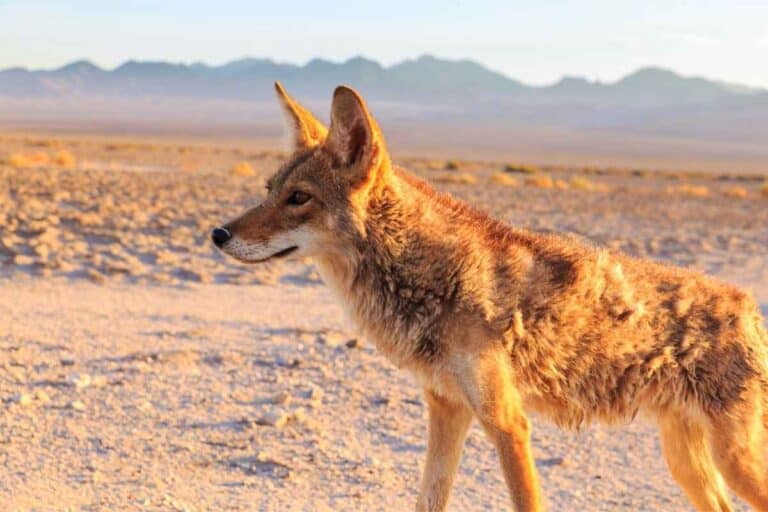Solved: Why Do Dogs Stretch So Much?
If you think there’s more to those leg stretches and yawns than just a typical doggie meet and greet, you got it right!
But do you know that there are excellent reasons why our canine pets often give us yoga-like doggie stretches? In fact, other mammals, including people, do these auto-body movements without even realizing it.
So why do dogs stretch so much? Technically, this act of involuntary stretching is called pandiculation. And here’s why we all do that, just like our dogs.
- “Resets” the brain after sleep
- Restores muscle function after inactivity
- Relieves tension to feel better
We often see our pets do certain acts or behave in a particular manner. More often than not, those behaviors are normal physiological functions to maintain the health of both the body and mind.
It’s true that we, pet owners, love to put meaning behind every little action that our beloved fur companions show or do to us. And that’s totally understandable!
We’d love to talk to them if only they can talk to us, right? On second thought, that can be weird… but at least for now, we know that behind every slight leg stretch and loud yawn is a sign of a healthy doggie.
Speaking of dog health, how does pandiculation or stretching behavior (sometimes called the combined stretch-yawning syndrome or SYS) affect the overall wellbeing of our dogs?
What are the benefits of stretching for dogs?
The benefits of dogs stretching are:
- Promotes Canine Mental Wellbeing
- Helps Dogs to be More Flexible
- It releases tention and anxiety
Involuntary or voluntary, stretching is good for our dogs. Like in humans, body stretches can do good to our body in many ways. Dogs instinctively know that!
- Promotes canine mental wellbeing. After a long sleep period, dogs stretch and yawn to take in more oxygen and help the brain go from sleep to wake mode. It’s also like our dog’s way of saying, “OK, human, it’s a great day, and I’m ready to play with you now!”.
- Helps dogs to be more flexible. Our pets sure know when to flex their muscles! Not only does stretching help to improve circulation, but it also helps restore proper muscle and tissue function, specifically after a long period of inactivity. For instance, after a dog nap or a good night’s sleep, dogs stretch to prepare themselves for a more active day with you.
- It’s necessary to be happy! Stretching and yawning are dogs’ ways to release stress, tension, anxiety, and boredom. It helps reduce pain and makes them feel better. So if you’ve noticed your pet yawning too much, then it can be a signal of anxiety or other mental issues in your pet.
We’ve learned that pandiculation or stretching is, in fact, a natural (and necessary) bodily function, not only in dogs but in other animals as well. Humans do this too without really appreciating its benefits.
Imagine doing a rigorous workout without doing a warm-up. That’s pretty much why pandiculation is vital for dogs and other mammals.
Simple Dog Stretches for Flexibility
Why don’t you add some easy stretches to your pet’s daily exercise routine? Dogs need lots of daily physical activities to stay healthy and strong.
But be sure to do proper warm-up exercises first before doing leg stretches. You can do this by walking around the yard for at least 5 minutes or applying a warm pad to your pet’s legs.
More importantly, don’t rush your dog and always be conscious of his or her response. Start when you’re both ready.
- Limb stretches – Start with a slow and gentle motion. Support your dog’s limb with both hands: holding the elbow and the other hand holding the paw. Rotate as if he or she is pedaling a bike, then slowly stretch out until the limb is straightened. If your dog is resisting, hold and stop the exercise. Reduce intensity until your dog allows you to stretch for at least 5 seconds and up to 30 seconds max at a time. Be very gentle when doing stretches. Never squeeze the joint.
- Neck and back muscle stretch – Sitting or standing is fine for this exercise. Lure your dog to move its head up by placing a treat in your hand. Then, lure your dog’s head down to the front legs. Do this while keeping the spine or posture straight. Repeat about 2-3 times for each limb.
Remember, while exercise is necessary for our dog’s health, we shouldn’t overdo it to avoid injury.
Related Questions
What does it mean when a dog stretches in front of you?
When we arrive home from outside, and our dog catches us while they were snoozing, chances are they would greet us with a long stretch and a yawn. Aside from welcoming their beloved human parent, this behavior is known as pandiculation or stretching after a long period of no movement (e.g., sleeping).
Do dogs stretch when they are in pain?
Not necessarily. Typically, dog stretches are involuntary and are necessary for physiological function. However, suppose you notice a posture change, irritability, or some trouble getting comfy. In that case, it’s time to schedule a vet appointment.
Why is my dog stretching his stomach?
It might be due to a swollen belly or bloating. Be sure to know the symptoms of common stomach problems, so you know when it is necessary to call your vet. If your dog stretches too much or shows signs of discomfort, take your canine pet to the nearest animal hospital for proper diagnosis and care.
Final Thoughts
We want to think of special meaning to our dogs’ every action or behavior for those who genuinely love dogs because we want to feel that they love us. And as fur parents, we want to understand their language more.
One thing is sure, though – our pets love us more than we’ll ever know. Whether they show it through morning greeting stretches or hyped jumps, or aggressive leg hugs, we know that’s how they communicate love, regardless of any other explanation.
In the end, the answer to why do dogs stretch so much won’t matter to dog lovers.
On a lighter note, why don’t we take a cue from our pets, grab that yoga mat that hasn’t seen the light of day, and revisit our daily exercise regimen?






